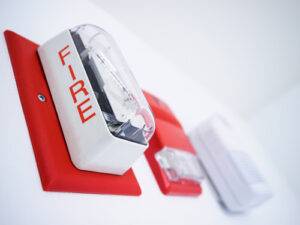 BSI has revised its standard for fire detection and fire alarm systems. The standard, BS 5839-1:2017, covers the planning, design, installation, commissioning and maintenance of fire detection and fire alarm systems in and around commercial buildings.
BSI has revised its standard for fire detection and fire alarm systems. The standard, BS 5839-1:2017, covers the planning, design, installation, commissioning and maintenance of fire detection and fire alarm systems in and around commercial buildings.
BS 5839-1:2017 – “Fire detection and fire alarm system for buildings. Code of practice for design, installation and commissioning and maintenance of systems in non-domestic premises” is referred to in both volumes of the government’s statuary guidance for fire safety, Approved Document B, which concerns building regulations [in England] covering fire safety matters within and around buildings.
The National Security Inspectorate is among the organisations that consider the recommendations given in BS 5839-1 mandatory, and thus essential for contractors to follow. The revised standard is relevant to anyone involved in the commissioning, installation, design and planning of fire alarm and detection systems for non-residential dwellings.
Some of the key changes over the standard it replaces include:
- Improved definition of the L2 fire alarm system. L2 Fire Alarm Systems are designed to offer automatic detection on all escape routes within a building
- Modified guidance for use of multi-sector detectors, with distinct sections dedicated to both the application and testing of these
- Clauses 17 and 18 require clarification as to the use of Voice Alarm Detectors (VADs) and Visual Indicator Devices (VID)
- Inclusion of a section in the standard concerning the testing of the power supply and how long any batteries or contingency power supply should last for
- Guidance for persons who work at night so they can recognise the alarm
Ant Burd, Head of Market Development for Built Environment at BSI, said: “BS 5839-1 was revised with input from the Fire Industry Association and the Chief Fire Officers Association. It will be a go-to document for anyone involved in the installation or maintenance of commercial fire detection and fire alarms, and will prove essential for contractors in the industry.”
The term ‘fire detection and alarm systems’, in the context of this standard, includes systems comprising of only one or two manual call points and sounders, as well as complex networked systems that incorporate a large number of automatic fire detectors, manual call points and sounders.
The term also includes systems which are capable of providing signals to initiate the operation of the other fire protection systems and equipment (such as fire extinguishing systems, smoke control systems or automatic door release equipment) or safety measures (such as the shutting down of air handling systems, closing of oil or gas valves, or grounding of lifts). It does not apply to other systems and equipment themselves, or the ancillary circuits to interface with them.
Recommendations for the planning, installation and servicing of facilities for operation of certain fire protection systems by the systems addressed within BS 5839-1 are given in the relevant part of the BS 7273 series. Equally, BS 5839-1 does not recommend whether or not a fire alarm system should be installed in any given premises. Recommendations for fire detection and alarm systems in dwellings are covered in BS 5839-6.
FIA seminars
The Fire Industry Association will be holding four fully accredited CPD seminars in different parts of the UK on the update to BS 5839-1:2017. The events are free to attend and will cover all of the changes made to the standard.
Presentation dates/locations:
4th Oct, FIM Expo, Glasgow Science Centre (Will Lloyd) (Limited spaces available – register for FIM Expo to guarantee entry to the 11am seminar)
5th Oct, FIA office, Hampton, South West London (Don Scott) – morning session (Fully booked)
5th Oct, FIA office, Hampton, South West London (Don Scott) – afternoon session (Limited spaces available)
13th Oct, Cheshire Fire and Rescue Service, Winsford (Will Lloyd) – (Limited spaces available)

